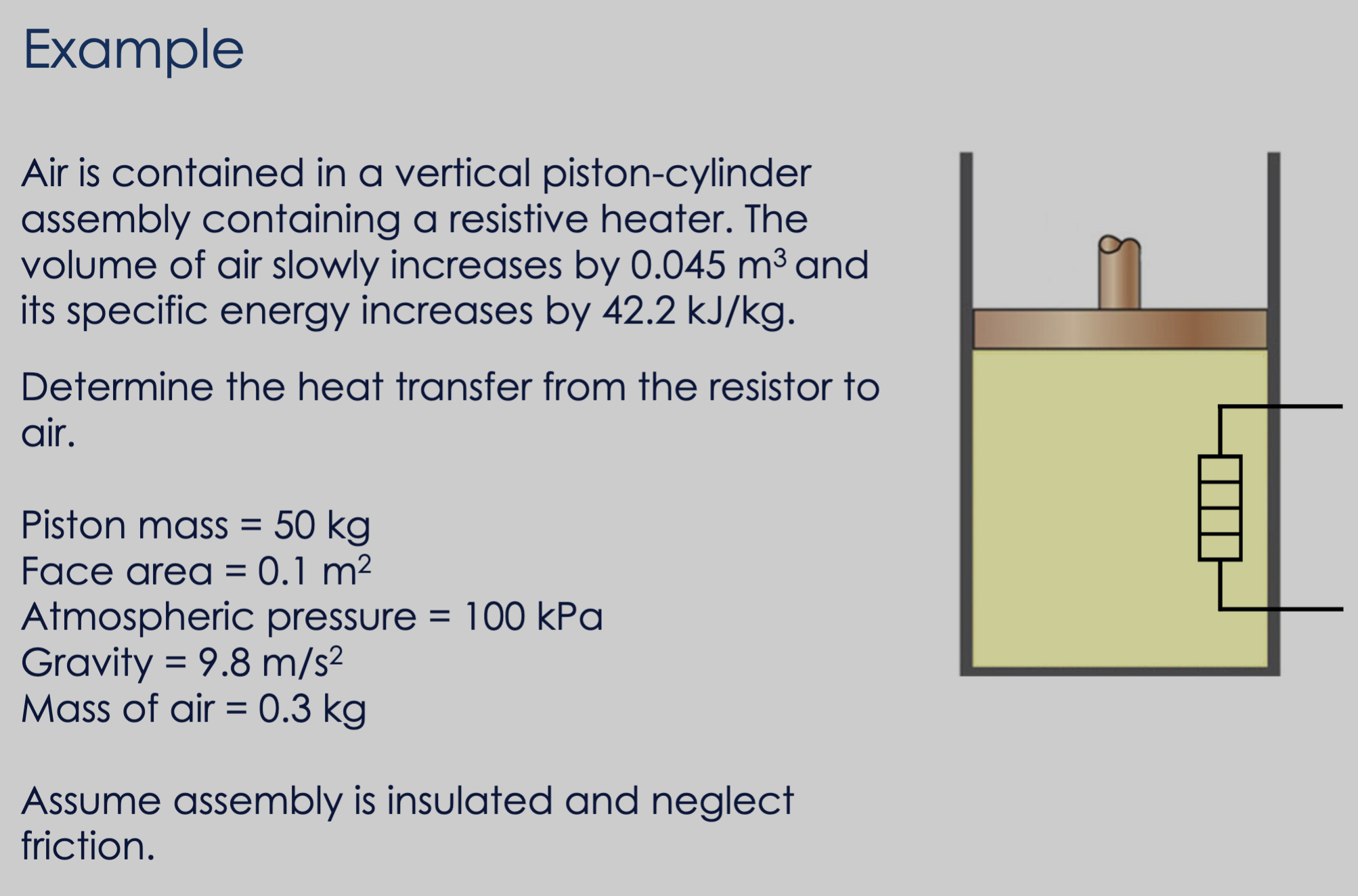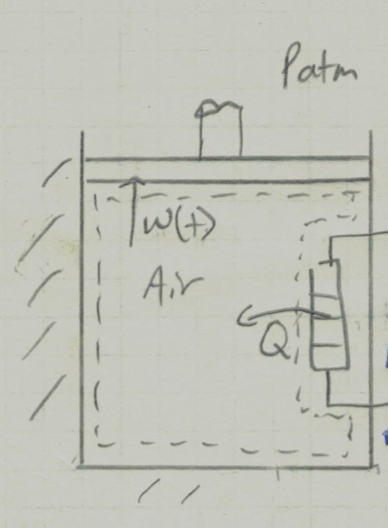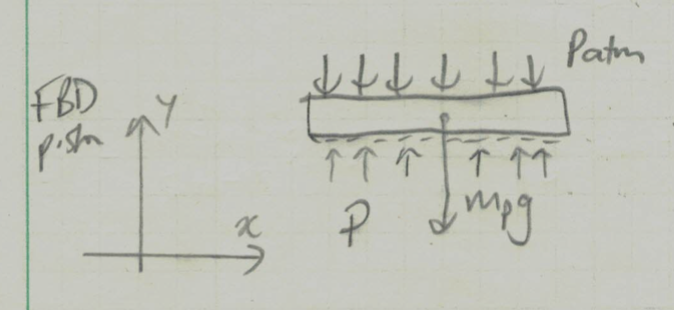
Draw the system:

Assumptions:
- Stationary system ()
- Entire assembly is perfectly insulated (adiabatic)
- Process is isobaric – pressure remains constant throughout
- Process is slow
The internal energy of the air is:
This can be re-written to find heat:
The work done by a system when it expands or contracts against an external pressure is given by the integral of the pressure over the change in volume:
The piston-cylinder assembly implies that the system is isobaric – pressure inside the cylinder is balanced by the atmospheric pressure and the weight of the piston. Since the pressure is constant in this case, we can take out from the integral:
is just the volume change of the system, which the question gives to us as .
We can find by considering the forces acting in the -direction:
where:
- is the upward force exerted by the pressure inside the cylinder
- is the downward force exerted by the atmospheric pressure in the surroundings
- In both of the above, is the area of the cylinder. Recall that so .
- is the gravitational force due to the weight of the piston.

We can re-arrange the above to solve for :
Then, we can plug this back into our work equation to get
Note that this is positive by convention because the system is doing work on the surroundings.
Finally, plugging back into the internal energy equation from before to find heat transfer: